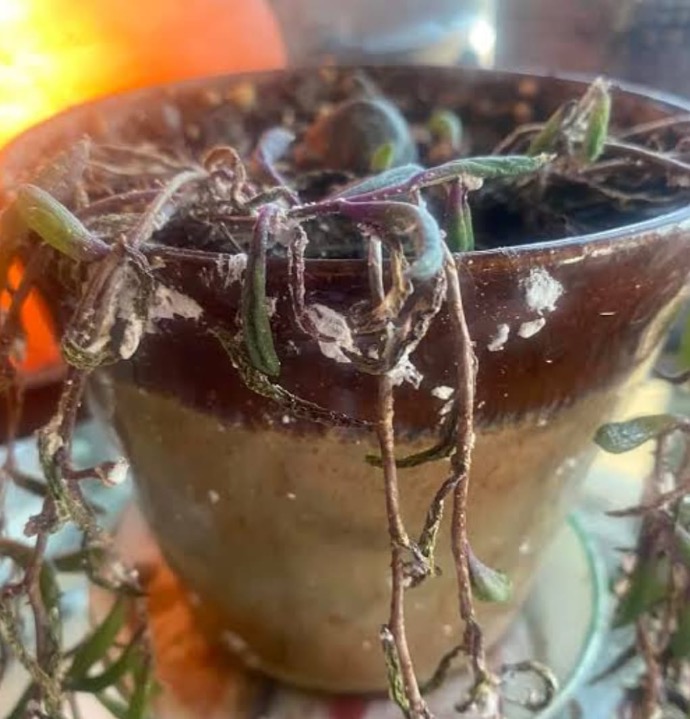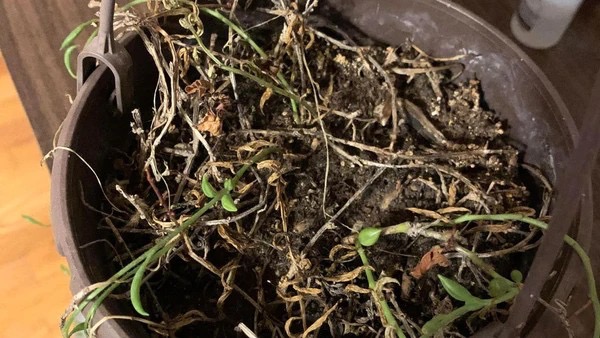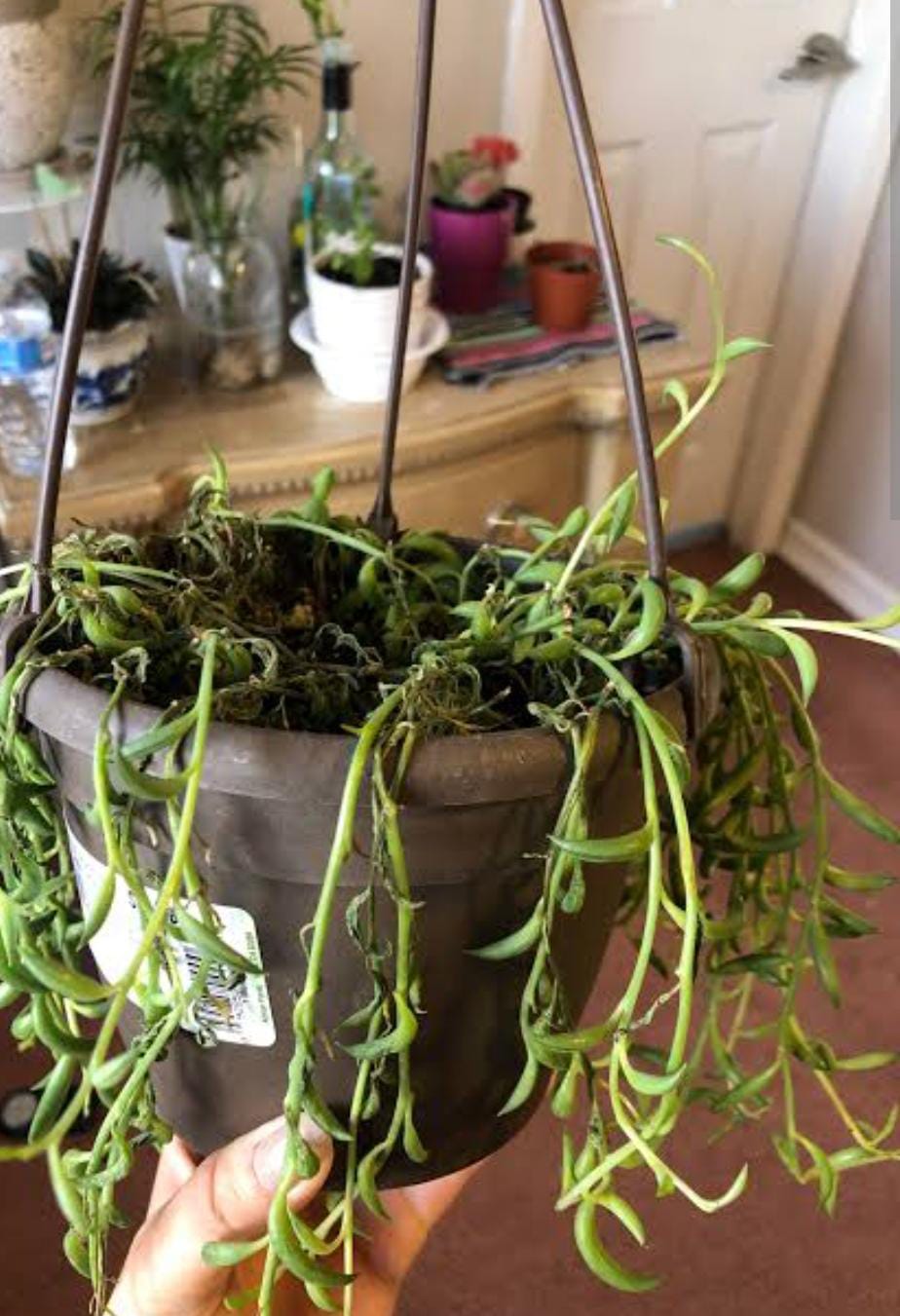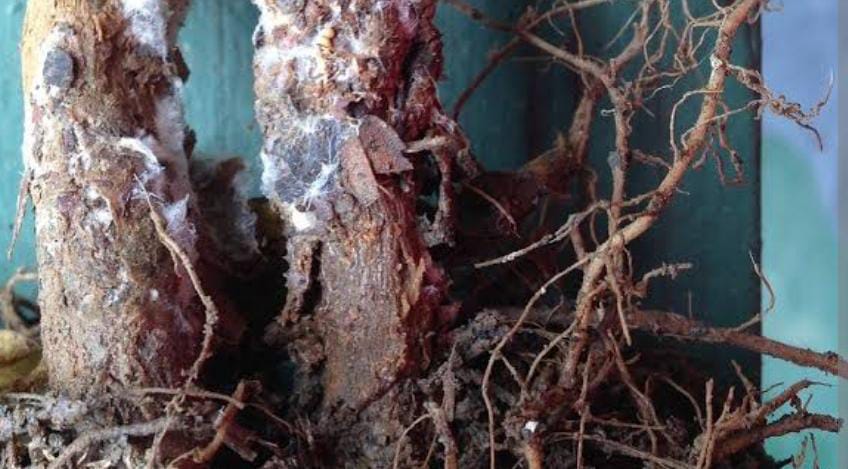String of bananas hanging plant
String of Banana Hanging, a succulent plant, thrives in well-drained soil and partial sun exposure. With a fast growth rate.
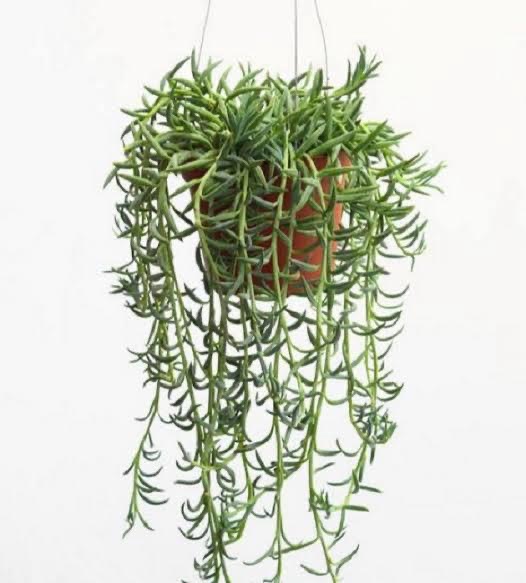
Habit
Succulent
Height
0.3-0.5 m
Growth
Moderate
Soil
Well-drained, sandy
Shade
Partial Shade
Moisture
Very Low
Edible
No
Medicinal
No
Origin
South Africa
Climatic Condition
Subtropical, Tropical
Temperature (°)
15-30°C
Humidity (%)
50-60%
Potting media
Cactus mix
Fertilizers
Balanced, organic NPK
Watering
Light watering
Plant Weight
100-300 g
Flowering Time
Summer, Fall
Soil Ph level
6.0 - 7.0
Water Ph level
6.0 - 7.0
Soil EC
1-2 dS/m
Yield Per Plant
Ornamental, hanging plant
NPK ratio
5:10:10
life Span
Perennial
Health Benefits
Ornamental, air purifying
Suggested Grow Media or Potting Mix ?
50% perlite, 30% potting soil, 20% coarse sand
Suggested Fertigation/Fertilizers
Fertilize every 4-6 weeks with a balanced, water-soluble fertilizer.
Common Diseases and Remedies
Root rot , southern blight
Leaves curl , brown patches on leaves
Remove infected plants , neem cake
HEALTH BENEFITS
· Primarily used as an ornamental plant.
· Improves indoor air quality by absorbing toxins.
What Are The Strings Of Banana ?
Banana trees are fast-growing and easy-care plants. The banana-shaped leaves grow long enough to hang down from the pot. This plant comes in a 1 inch mesh pot. Do not remove plants from net pots.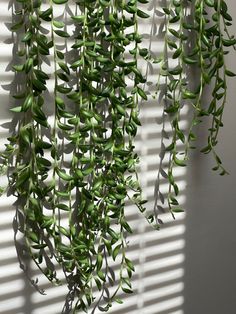
What Are The Different Types Of Strings Of Banana
1. Curio radicans:
is commonly known as Banana String or Fishhook Senecio. Like most members of the genus Curio, C. radicans is relatively hardy and easy to grow, making it a good starting point for novice gardeners and those looking to get into the succulent and container gardening hobby.
2. Senecio radicans:
This drought-tolerant, easy-care succulent grows in a warm, sunny window. However, keep drooping vines out of reach of curious children and pets. Senecio species (the genus that once included banana strings) are toxic to humans, dogs, cats, and horses.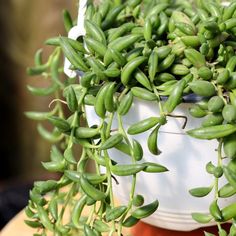
How To Care Strings Of Banana
Location
Place the window facing away from sunlight or near other plants that block sunlight. Banana string can survive in the sun, but avoid exposing it to direct sunlight as it will burn the plant.
Sunlight
Choose a location with bright indirect light. Place the banana string indoors near a sunny window. If you plant your plants outdoors, make sure they receive both morning sunlight and afternoon shade. Direct sunlight will burn the leaves.
Soil
Banana strands require a well-drained soil mix to prevent root rot. You can purchase pre-mixed cactus and succulent soil or mix it yourself at home. A mix of 2 parts potting soil, 1 part perlite, and 1 part pumice or sand will provide proper drainage for your banana strings.
Hydration
How often should you water your banana strings? String of Bananas requires 0.8 cup of water every 9 days when planted in a 5.0 inch pot out of direct sunlight.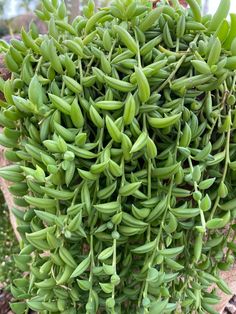
Nutrition
Ideal NPK for banana strands: 5-5-5 ratio supports growth. Fertilize during one growing season. Fertilize every 4 to 6 weeks in the spring and summer. Signs of overfertilization: white crust, yellow leaves, brown tips, limp roots.
Issues
Root rot is a serious problem for many banana plants. This is caused by overwatering or lack of drainage, and can cause the plant to wilt, turn yellow, or even die. To avoid this problem, it's important to plant your plants in well-drained soil and make sure the pot has enough drainage holes.
What Are The Benefits Of Strings Of Banana?
The "strings" of bananas, scientifically called "phloem bundles", are often peeled and thrown away with the skin, but like any other fruit, It has higher nutritional value. Become. It is rich in potassium, dietary fiber, vitamin A, and vitamin B6.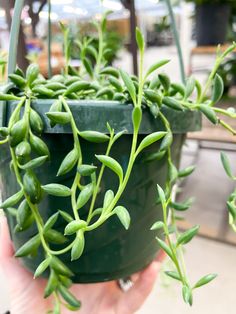
FAQs About Growing Strings Of Banana
1. Is banana string good for you?
This stringy part, known as the phloem bundle, is completely edible and incredibly nutritious. Bananas contain trace amounts of radioactivity, but they are full of deliciousness.
2. What are some interesting facts about banana string?
Banana string has thick stems and is easy to propagate. Outdoors it grows moderately to rapidly, but indoors the growth rate depends on the amount of light it receives. This plant requires exposure to moderate to strong light, and insufficient light can cause stunted growth.
3. Can you eat banana chains?
Banana string is toxic to cats and dogs and mildly toxic to humans if swallowed. Plant sap can also cause dermatitis. Hang succulents out of reach of pets and small children. June 7, 2021
4. Do banana strings need the sun?
Light. Since this plant is native to southern Africa, you might think it needs lots of sunlight. However, banana trees tend to grow in partial sun or light shade. This succulent is best placed near a sunny window or near other plants that block sunlight.
5. Why are banana strings sticky?
Sticky stems can be a sign of pests, but if you check carefully and don't find anything, you're in luck. Even a healthy string of pearls can be a little sticky on the stem. In the wild, these residues can stick to rocks where wind or critters can reach them.
